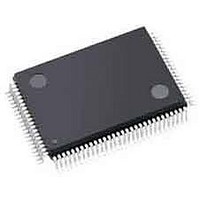AGLN030V2-ZVQG100 Actel, AGLN030V2-ZVQG100 Datasheet - Page 13

AGLN030V2-ZVQG100
Manufacturer Part Number
AGLN030V2-ZVQG100
Description
FPGA - Field Programmable Gate Array 30K System Gates IGLOO nano
Manufacturer
Actel
Datasheet
1.AGLN030V5-ZUCG81.pdf
(140 pages)
Specifications of AGLN030V2-ZVQG100
Processor Series
AGLN030
Core
IP Core
Number Of Macrocells
256
Maximum Operating Frequency
250 MHz
Number Of Programmable I/os
77
Supply Voltage (max)
1.5 V
Supply Current
6 uA
Maximum Operating Temperature
+ 70 C
Minimum Operating Temperature
- 20 C
Development Tools By Supplier
AGLN-Nano-Kit, AGLN-Z-Nano-Kit, AGL-Dev-Kit-SCS, Silicon-Explorer II, Silicon-Sculptor 3, SI-EX-TCA, FLASHPRO 4, FlashPro 3, FLASHPRO LITE
Mounting Style
SMD/SMT
Supply Voltage (min)
1.2 V
Number Of Gates
30 K
Package / Case
VQFP-100
Lead Free Status / RoHS Status
Lead free / RoHS Compliant
Available stocks
Company
Part Number
Manufacturer
Quantity
Price
Company:
Part Number:
AGLN030V2-ZVQG100
Manufacturer:
Microsemi SoC
Quantity:
10 000
Company:
Part Number:
AGLN030V2-ZVQG100I
Manufacturer:
Microsemi SoC
Quantity:
10 000
User Nonvolatile FlashROM
Actel IGLOO nano devices have 1 kbit of on-chip, user-accessible, nonvolatile FlashROM. The
FlashROM can be used in diverse system applications:
The FlashROM is written using the standard IGLOO nano IEEE 1532 JTAG programming interface. The
core can be individually programmed (erased and written), and on-chip AES decryption can be used
selectively to securely load data over public networks (except in the AGLN030 and smaller devices), as
in security keys stored in the FlashROM for a user design.
The FlashROM can be programmed via the JTAG programming interface, and its contents can be read
back either through the JTAG programming interface or via direct FPGA core addressing. Note that the
FlashROM can only be programmed from the JTAG interface and cannot be programmed from the
internal logic array.
The FlashROM is programmed as 8 banks of 128 bits; however, reading is performed on a byte-by-byte
basis using a synchronous interface. A 7-bit address from the FPGA core defines which of the 8 banks
and which of the 16 bytes within that bank are being read. The three most significant bits (MSBs) of the
FlashROM address determine the bank, and the four least significant bits (LSBs) of the FlashROM
address define the byte.
The Actel IGLOO nano development software solutions, Libero
and Designer, have extensive support for the FlashROM. One such feature is auto-generation of
sequential programming files for applications requiring a unique serial number in each part. Another
feature enables the inclusion of static data for system version control. Data for the FlashROM can be
generated quickly and easily using Actel Libero IDE and Designer software tools. Comprehensive
programming file support is also included to allow for easy programming of large numbers of parts with
differing FlashROM contents.
SRAM and FIFO
IGLOO nano devices (except the AGLN030 and smaller devices) have embedded SRAM blocks along
their north and south sides. Each variable-aspect-ratio SRAM block is 4,608 bits in size. Available
memory configurations are 256×18, 512×9, 1k×4, 2k×2, and 4k×1 bits. The individual blocks have
independent read and write ports that can be configured with different bit widths on each port. For
example, data can be sent through a 4-bit port and read as a single bitstream. The embedded SRAM
blocks can be initialized via the device JTAG port (ROM emulation mode) using the UJTAG macro
(except in the AGLN030 and smaller devices).
In addition, every SRAM block has an embedded FIFO control unit. The control unit allows the SRAM
block to be configured as a synchronous FIFO without using additional core VersaTiles. The FIFO width
and depth are programmable. The FIFO also features programmable Almost Empty (AEMPTY) and
Almost Full (AFULL) flags in addition to the normal Empty and Full flags. The embedded FIFO control
unit contains the counters necessary for generation of the read and write address pointers. The
embedded SRAM/FIFO blocks can be cascaded to create larger configurations.
PLL and CCC
Higher density IGLOO nano devices using either the two I/O bank or four I/O bank architectures provide
designers with very flexible clock conditioning capabilities. AGLN060, AGLN125, and AGLN250 contain
six CCCs. One CCC (center west side) has a PLL. The AGLN030 and smaller devices use different
CCCs in their architecture (CCC-GL). These CCC-GLs contain a global MUX but do not have any PLLs
or programmable delays.
•
•
•
•
•
•
•
•
Internet protocol addressing (wireless or fixed)
System calibration settings
Device serialization and/or inventory control
Subscription-based business models (for example, set-top boxes)
Secure key storage for secure communications algorithms
Asset management/tracking
Date stamping
Version management
R ev i si o n 1 1
®
IGLOO nano Low Power Flash FPGAs
Integrated Design Environment (IDE)
1 -7















